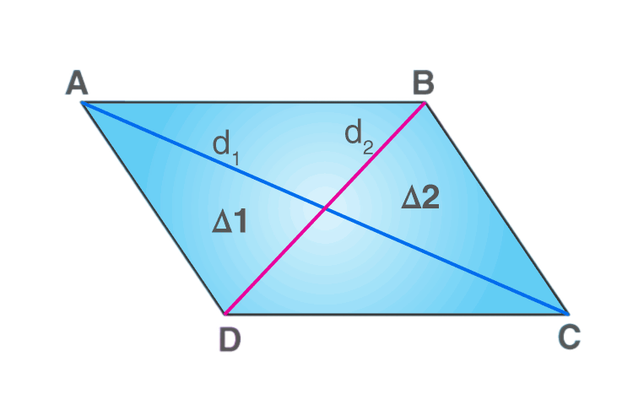









Area of the Rhombus Calculator
This calculator will help you to find the Area of the Rhombus if length of both the diagonals is given.
Loading...
Loading...
Area of a trapezium
Area of a triangle
Area of the triangle (Heron's)
Area of a parallelogram
Area of Equilateral triangle
Area of an Ellipse
- 1. Introduction to the Area of the rhombus calculator
- 2. What is the Formulae used ?
- 3. How do I find the area of the rhombus?
- 4. Why choose our area of rhombus Calculator?
- 5. A Video for explaining this concept
- 6. How to use this calculator?
- 7. Solved Examples
- 8. Frequently Asked Questions (FAQs)
- 9. What are the real-life applications?
- 10. Conclusion
1. Introduction to the area of the rhombus
Step into the world of geometric elegance as we unravel the secrets of calculating the area of rhombi. Whether you're a student exploring the realms of geometry or an enthusiast seeking a deeper understanding of mathematical shapes, this guide is tailored just for you. Join us on a journey through the facets of rhombi and discover the key to unlocking their area.
A rhombus is a quadrilateral with all sides of equal length and equal opposite angles. This symmetrical figure holds mathematical beauty and practical applications, making it an intriguing subject for exploration.
2. What is the Formulae used?
The formula to find the area of rhombus is given by:
, Where
A is the area of rhombus.
and are the diagonals of the rhombus.
3. How do I calculate the area of the rhombus?
The following steps can be followed to find the area of the rhombus using its diagonals:
First, find the measure of the diagonals of the rhombus.
Now, apply the formula to calculate the rhombus area given as
where and are the diagonals of the rhombus.
4. Why choose our Area of the rhombus Calculator?
Our calculator page provides a user-friendly interface that makes it accessible to both students and professionals. You can quickly input your square matrix and obtain the matrix of minors within a fraction of a second.
Our calculator saves you valuable time and effort. You no longer need to manually calculate each cofactor, making complex matrix operations more efficient.
Our calculator ensures accurate results by performing calculations based on established mathematical formulas and algorithms. It eliminates the possibility of human error associated with manual calculations.
Our calculator can handle all input values like integers, fractions, or any real number.
Alongside this calculator, our website offers additional calculators related to Pre-algebra, Algebra, Precalculus, Calculus, Coordinate geometry, Linear algebra, Chemistry, Physics, and various algebraic operations. These calculators can further enhance your understanding and proficiency.
5. A video based on the concept of how to find the Area of rhombus.
6. How to use this calculator
This calculator will help you to find the area of the rhombus.
In the given input boxes, you have to put the value of the measure of the diagonals of the rhombus.
After clicking the Calculate button, a step-by-step solution will be displayed on the screen.
You can access, download, and share the solution.
7. Solved Example
Find the area of the rhombus whose diagonals are 10 and 12 cm?
Given = 10 cm and =12 cm
== 60 square cm
8. Frequently Asked Questions (FAQs)
Can a rhombus have right angles?
No, by definition, a rhombus has opposite angles that are equal but not necessarily right angles.
Is the area formula affected if the rhombus is not a perfect square?
No, the area formula remains the same regardless of the shape of the rhombus.
What if only one diagonal is given?
The area formula requires both diagonals. If only one is given, it may not be possible to determine the area without additional information.
Is a square considered a rhombus?
Yes, a square is a special case of a rhombus where all angles are right angles.
Can the diagonals of a rhombus be of different lengths?
Yes, in a rhombus, the diagonals are of different lengths; if they are equal, it is a square.
9. What are the real-life applications?
Rhombi finds practical applications in various fields. In construction, rhombus-shaped tiles or patterns are often used for aesthetic appeal. In engineering, rhombus-based structures offer stability and strength, making them valuable in the design of certain frameworks.
10. Conclusion
As we conclude our exploration of rhombus and their area calculation, may you carry this newfound understanding into your mathematical endeavors? The ability to decipher the geometric secrets of rhombi not only enriches your knowledge but also opens doors to practical applications in the real world. Happy calculating!
This blog is written by Neetesh Kumar
If you have any suggestions regarding the improvement of the content of this page, please write to me at My Official Email Address: [email protected]
Are you Stuck on homework, assignments, projects, quizzes, labs, midterms, or exams?
To get connected to our tutors in real-time. Sign up and get registered with us.










Comments(0)



Leave a comment